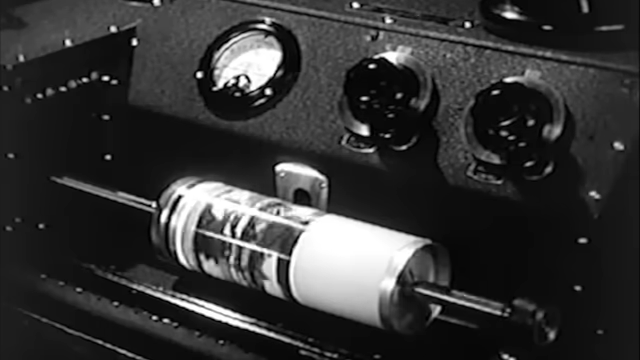
Remember fax machines? They used to be all the rage, and to be honest it was pretty cool to be able to send images back and forth over telephone lines. By the early 2000s, pretty much everyone had some kind of fax capability, whether thanks to a dedicated fax machine, a fax modem, or an all-in-one printer. But then along came the smartphone that allowed you to snap a picture of a document and send it by email or text, and along with the decrease in landline subscriptions, facsimile has pretty much become a technological dead end.
But long before fax machines became commonplace, there was a period during which sending images by wire was a very big deal indeed. So much so that General Motors produced “Spot News,” a short film to demonstrate how newspapers leveraged telephone technology to send photographs from the field. The film is very much of the “March of Progress” genre, and seems to be something that would have been included along with the newsreels and Looney Tunes between the double feature films. It shows a fictional newsroom in The Big City, where a cub reporter gets a hot tip about an airplane stunt about to be attempted out in the sticks. The editor doesn’t want to miss out on a scoop, so he sends a photographer and a reporter to the remote location to cover the stunt, along with a technology-packed photographic field car.
After the “snapper” gets some shots of the stunt by hanging onto the roof of the van, which honestly seems more dangerous than what the pilot is attempting, the real fun begins. He passes the exposed film into the photo lab section of the van, where a darkroom tech processes the film using what appears to be the standard wet process. How exactly this is accomplished while the van is speeding toward the nearest telephone pole isn’t detailed; some things you just have to take on faith.
Once the van reaches a telephone pole, they need to connect the van to the telephone network. After donning pole-climbing gaffs and period-correct PPE — a fedora — the reporter climbs the pole to make the connection. The old “press card in the hat band” trick used to buy you a lot of leeway, we suppose. Inside the van, the now-developed photograph is wrapped around the drum of a scanning machine, which aims a narrow beam of light onto the black-and-white image. Reflected light is picked up by a phototube, which translates it into an audio tone that goes straight into the earpiece of a wonderfully retro candlestick phone. Back at the newspaper, a receiver translates the audio tones into varying brightness on a neon bulb, which exposes a sheet of photographic film wrapped around an identical drum to reproduce the image in minutes.
The genius bit about this setup is its completely analog nature. As long as the sending and receiving drums are the same size and rotating at the same speed, there’s no need for any kind of synchronization signals or handshaking. And the fact that the output of the receiver was ready to rush down to the press room in time for the evening edition must have been a boon to the editors.
But really, the gem of this piece was the visualization of the facsimile process using two rolls of string, and how an image could be serialized and deserialized. Encoding a message on a string wrapped around a drum and then randomizing the string by balling it up seems like a low-tech way to exfiltrate information under hostile conditions, as long as your recipient knows what size drum to use for decoding. There’s your Hackaday fieldcraft lesson for the day.
Thanks to [Mike Bradley] and [Keith Olson] for the tip.
Retrotechtacular: Putting Pictures on the Wire in the 1930s
Source: Manila Flash Report
0 Comments